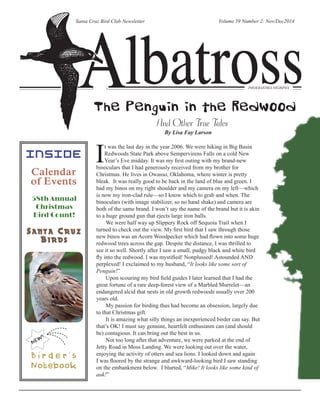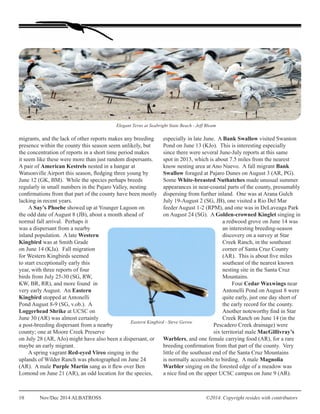This document is a newsletter from the Santa Cruz Bird Club that summarizes a story about the author's early experiences birding in Big Basin Redwoods State Park. It describes how on New Year's Eve 2006, while hiking with her husband, she spotted an Acorn Woodpecker through her new binoculars. She then saw an unfamiliar small black and white bird in a redwood tree that she thought looked like a penguin. Upon further research, she learned it was a rare sighting of a Marbled Murrelet, an endangered seabird that nests in old growth redwoods. This unexpected sighting fueled her newfound passion for birding.















